No Mo’ Mow?
Puddock Hill Journal #13: When No Mow May Bleeds Into July, Further Possibilities Await
Imagine a science fiction movie with the following plot. You live a peaceful, pastoral life, comfortable in your surroundings and with plenty of food. But once in a while a giant, spinning, fast-moving blade arrives unexpectedly over the horizon. If you don’t happen to duck into a hole in time or somehow get out of the way, you’re chopped meat, left to die. If you do get out of the way, you emerge from hiding to find your home and food destroyed. Genre: horror.
What would we call such a movie? How about The Great American Lawn.
The Xerxes Society’s Bee City USA initiative notes that our nation’s lawns cover 40 million acres in aggregate or 2% of all land, “making them the single largest irrigated crop we grow.” What’s wrong with that? Bee City goes on to count the ways: “The traditional monoculture lawn lacks floral resources or nesting sites for bees and is often treated with large amounts of pesticides that harm bees and other invertebrates.”
For the first ten years that we lived at Puddock Hill, we maintained approximately a third of the property in lawn, as the prior residents had done, although we never used chemicals, rarely fertilized, and did not irrigate. Eventually, we stopped mowing the steeper slopes and decided to manage them as micro-meadows that we only mow once a year, except to fight off patches of invasives.
This year, for the first time, we embraced an increasingly popular movement dubbed No Mow May, which began in the UK in 2019 and quickly spread. The intention of No Mow May, as au courant gardeners may know, is to give bees and other pollinators more nutrition opportunities at a time when fewer flowers are available to them.
While Pam and I love the look of a beautiful lawn as much as the next person, our increasing awareness of its cost to the environment got us rethinking the proposition over the past several years. It’s like, once you learn the evil queen is ugly inside, her outer beauty no longer tempts you.
If you live in the country, you probably know that farmers cutting hay sometimes run over young deer fawns. The young fawn’s instinct is to make itself small, to blend into the field (which is the point of its dappling), but a harvester cuts close to the ground and the driver often can’t spot the well-camouflaged animal until it’s too late. I imagine a lawn mower has the same effect on slow-moving smaller critters, even if the results are less noticed and therefore less horrific.
Modern humans rely on speed, and speed often kills. For a couple of years, we employed a lawn service that used stand-up riding mowers that can cover ground at a very fast clip, and these guys floored it. Too fast. I’m sure it helped their bottom line, but at what cost to the reptiles, amphibians and small mammals hiding in the greenery? I decided to find another lawn service.
Now, years later, we’ve endeavored to extend No Mow May to—well, maybe forever. We’ve minimized mowing as much as possible while still keeping things neat and tidy around the house. We mow around beds; we mow small lawn areas in the vicinity of structures (house, barn, garden shed, spring house, driveway), and we mow paths. This effort has probably reduced the lawn by 75 percent.
Here’s the view from the back patio looking toward the barn:
From the new garden shed looking toward the back privacy fence (and occupied birdhouse):
Looking toward the back of the garden shed:
Along the stream (which is hidden by vegetation to the right):
And looking from the driveway toward the big pond and spring house, which is mostly obscured by a wisteria vine that we inherited:
All of these areas were lawn last year or regularly mowed field. The advantages of this new approach for the backyard steward are significant:
Less time spent mowing frees up time for other projects.
Deeply rooted and taller-growing meadow plants limit erosion in their immediate vicinity while reducing runoff that might do more harm downhill or downstream.
By capturing and slowing fallen rain, meadows also reduce nitrogen runoff that can harm nearby wetlands and water bodies.
As Xerxes emphasizes, unmowed areas provide habitat for wildlife that lawns don’t. We’re already seeing more fireflies at Puddock Hill.
Once you wrap your mind around displacing the lawn, meadows create garden design opportunities for mixing in splashes of color from native plants and introducing interesting walking paths that invite the eye (and the feet) to explore.
But challenges also come with this territory. One must figure out a new maintenance regime, which may be different from one area to another, and from one year to another. And we will have to keep a sharp eye out for invasive plants, which may necessitate various unplanned interventions.
So, I don’t know for sure how No Mow Forever will work out, but up until now our effort (or is it lack of effort?) has been rewarding.
This happy patch of bedstraw (Galium spp.) on the upper big pond path reminds me of the rewards of fighting back invasives, even though some consider it a noxious weed itself (*sigh*):
The non-native climbing hydrangea on the arch off the driveway is looking lush. That’s an old white oak in the background. Our new fountain in the middle:
Flowers putting on a show in the raised beds include coreopsis and allium:
Echinacea varieties add to the color:
The lilies are huge:
Non-native but not invasive Queen Anne’s lace has begun to show off by the big pond dam. Larry’s crew had to go aggressively after a tangle of porcelainberry but managed to spare this plant and patches of others. That’s a feeding ant in the center.





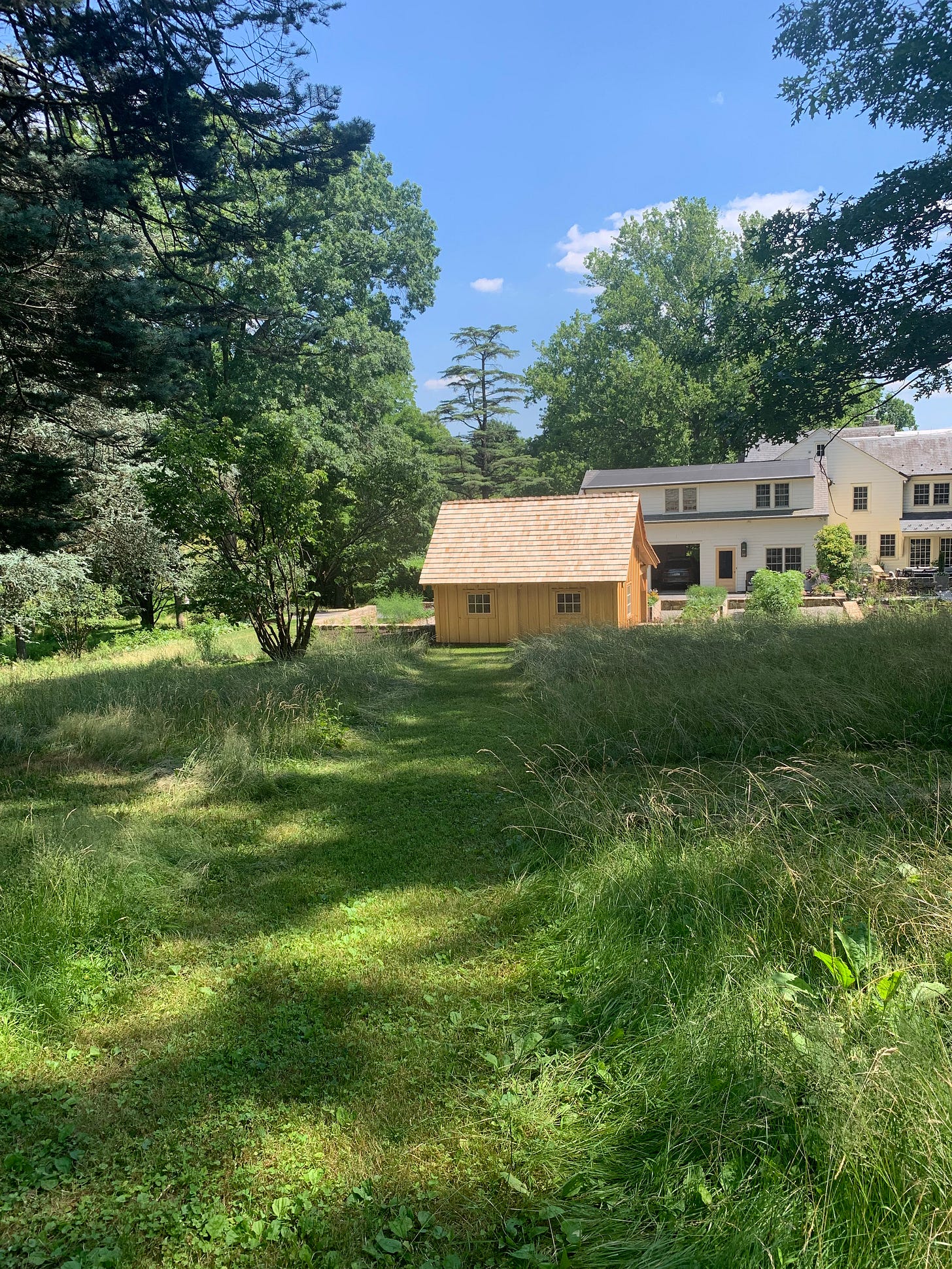
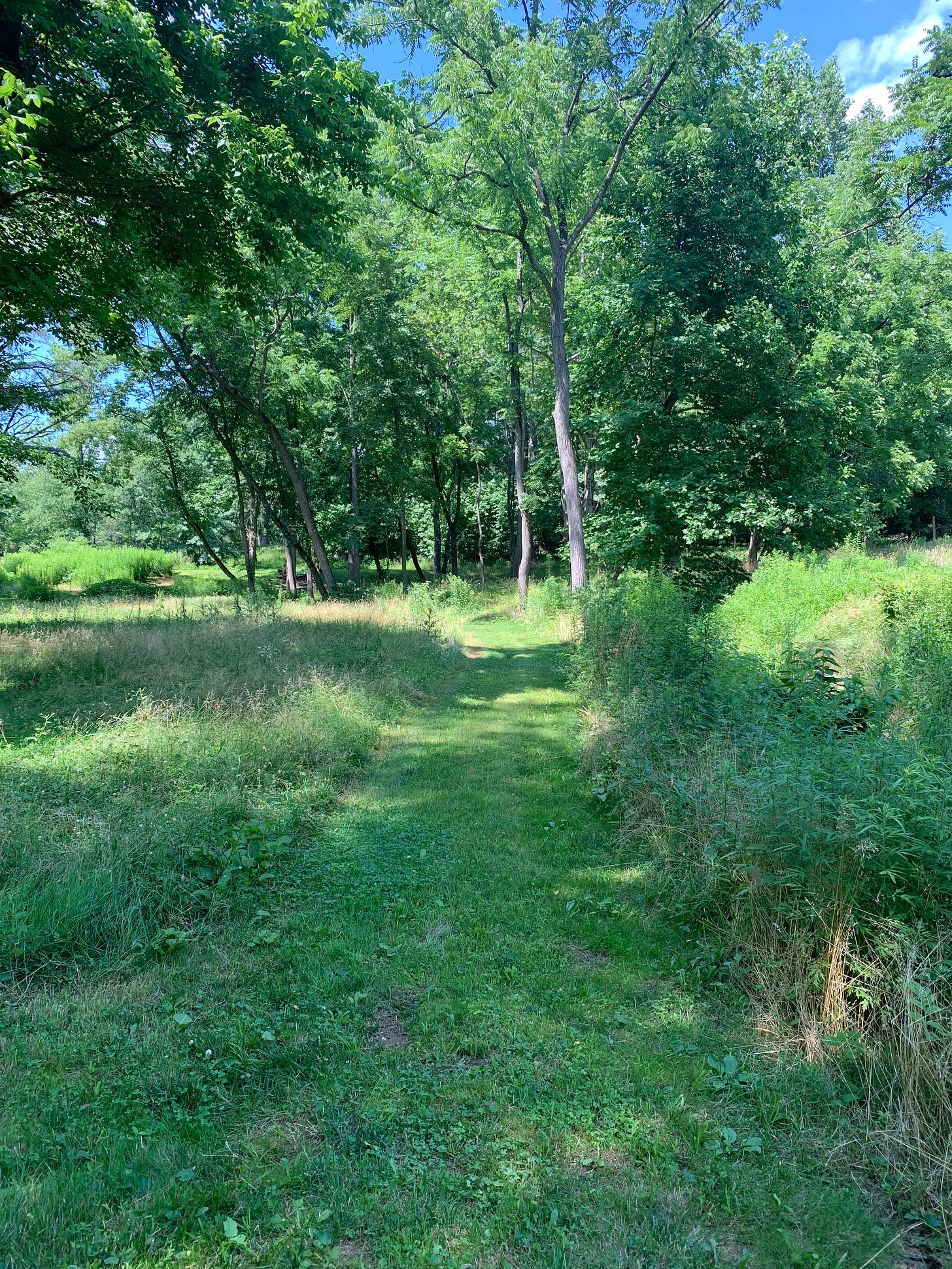
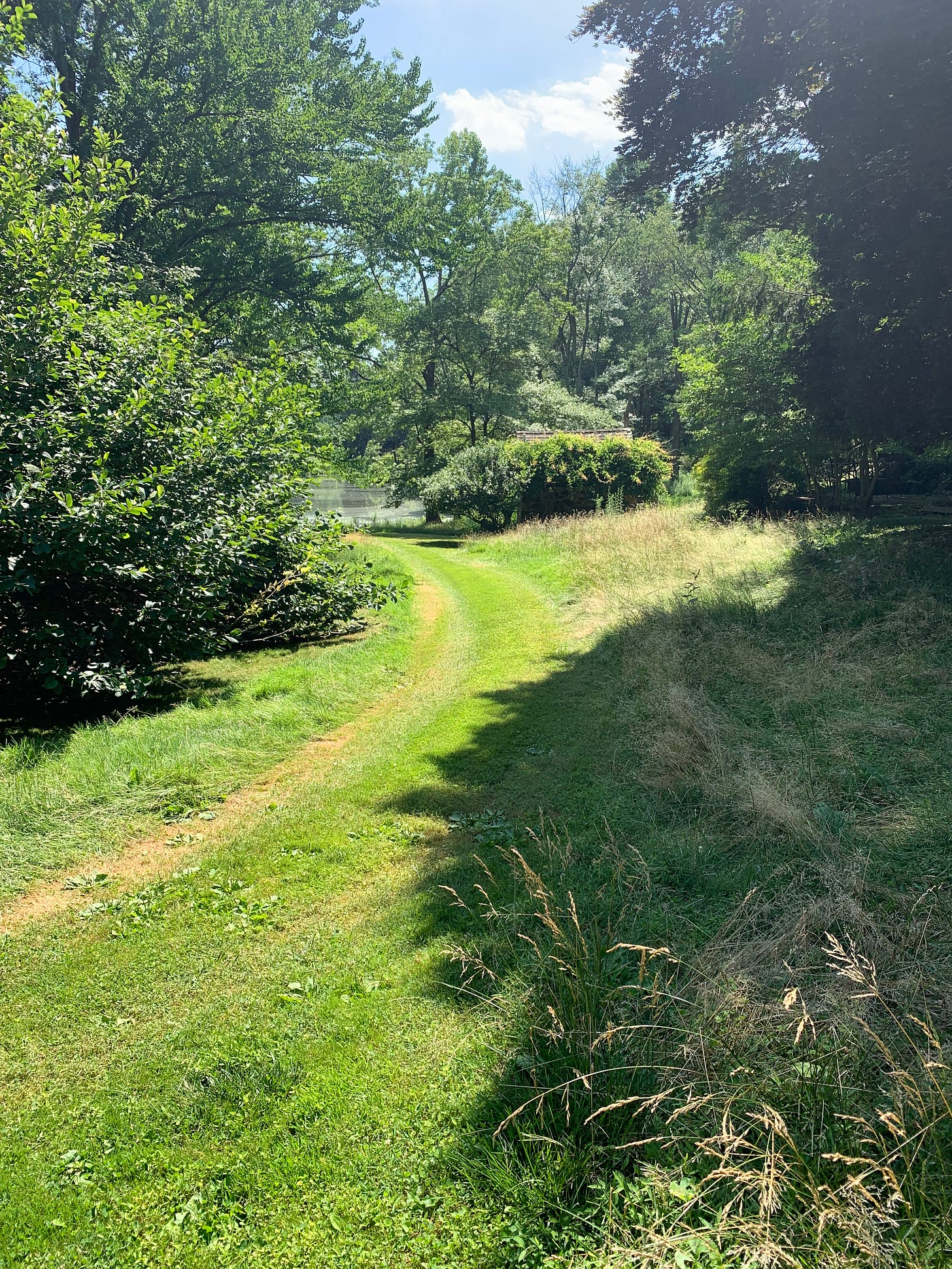


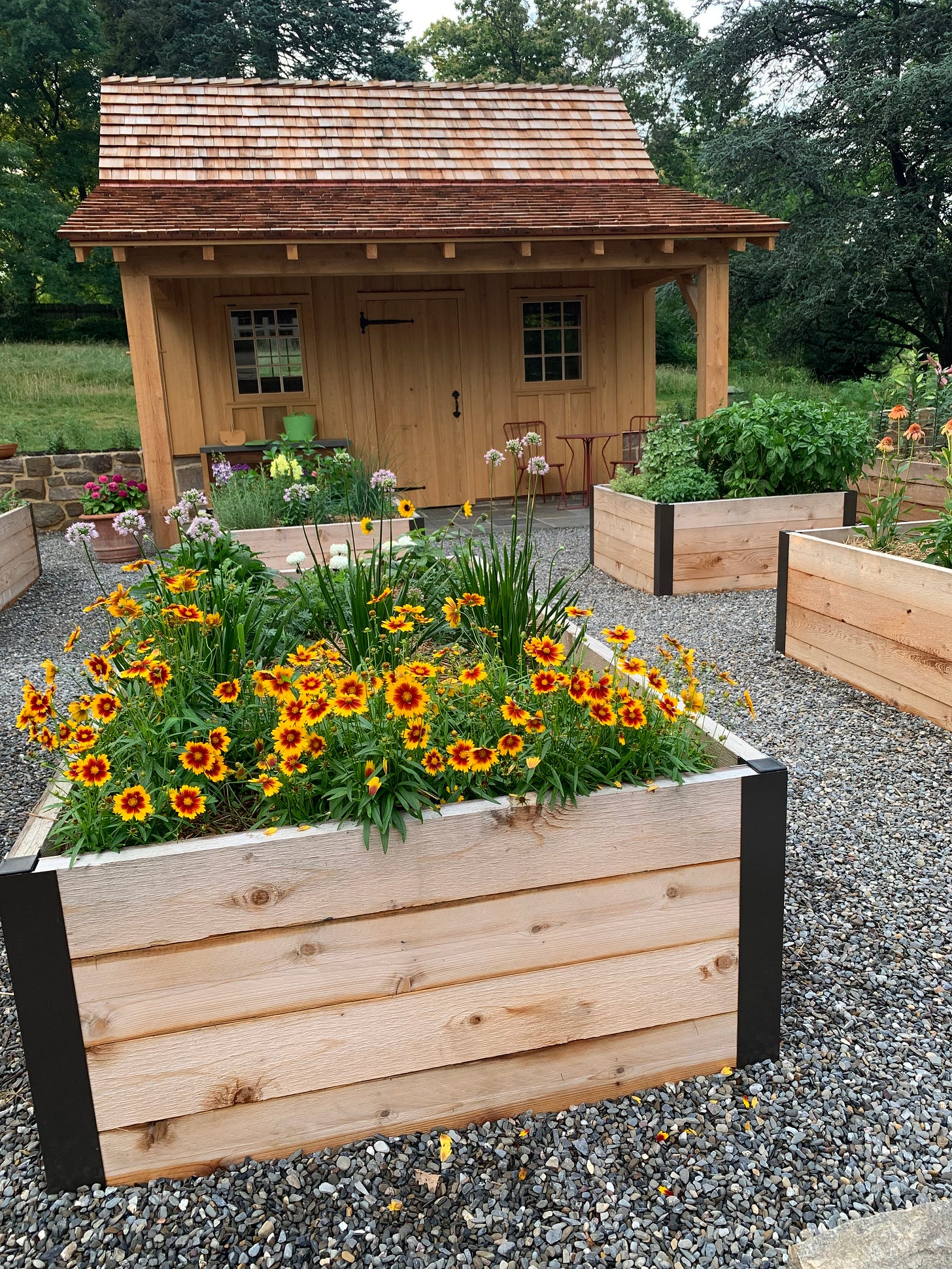
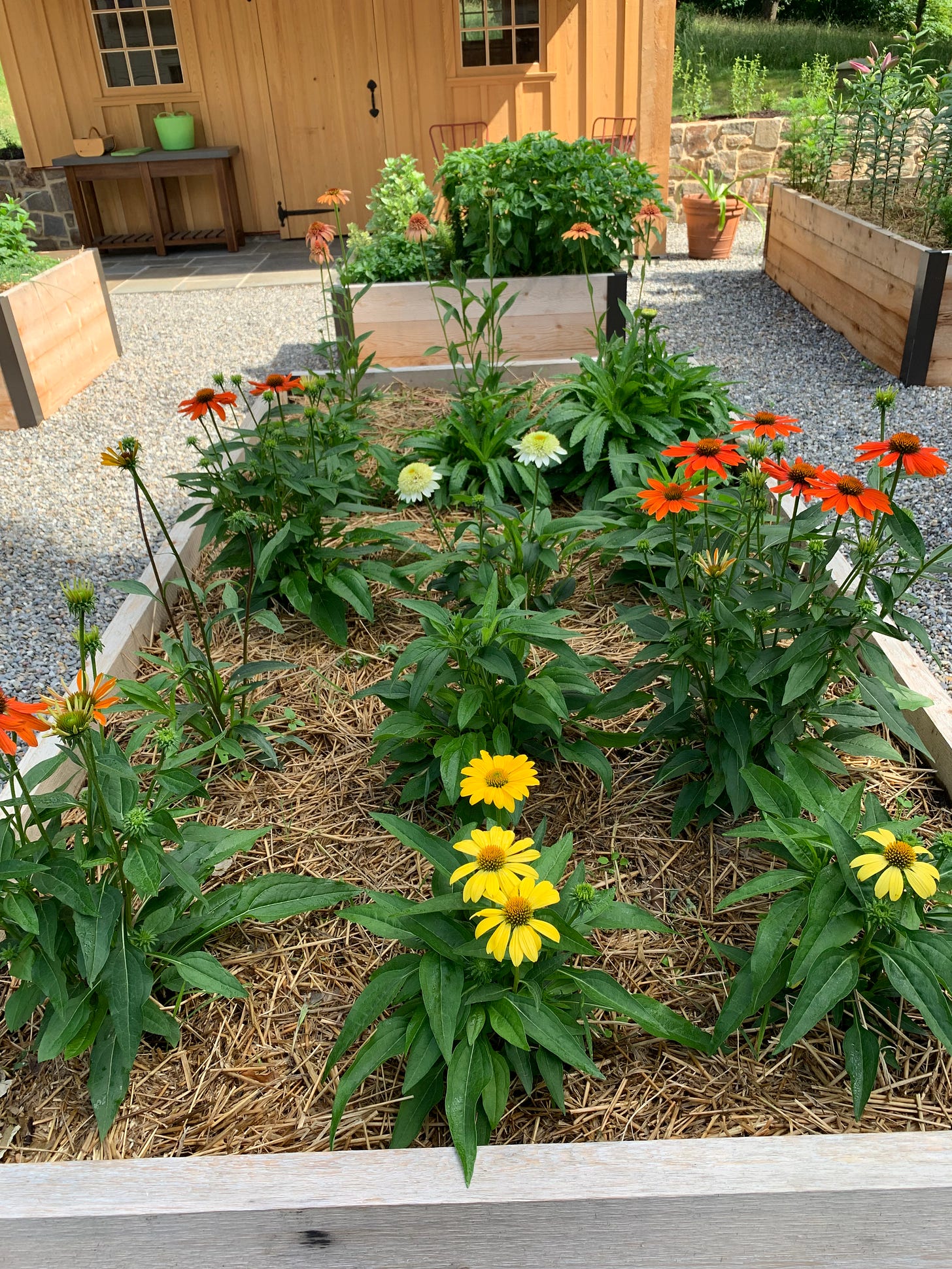


This subject addresses exactly what my thoughts were today as I was driving from one destination to the next. We haven’t had a lot of rain so the lawns (including ours) are starting to look dry with plenty of yellow and brown patches (including ours). But, this new, modern home (that I am quite obsessed with) that has gone up recently has long, beautiful grasses for its lawn. The look of the home and property is very Asian inspired, which makes sense since the architects are as well. As I drove past, I thought that this is the answer to a beautiful looking lawn…one that doesn’t need to be mowed. However, as you point out, it has so many other benefits including saving lives.
Right on, Cynthia. Once you've embraced the beauty of a walking path cut through high grass, the conventional lawn begins to seem so one-dimensional, doesn't it?